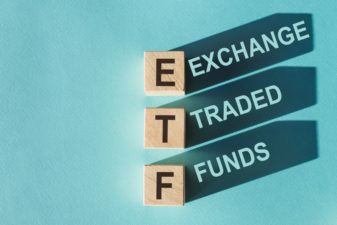Agrium Inc. (TSX:AGU)(NYSE:AGU) and Potash Corp./Saskatchewan Inc. (TSX:POT)(NYSE:POT), represent Canada’s largest agricultural companies, and are some of the largest in the world. Both companies have tremendous growth opportunities as they benefit from increasing global population, growing food demand, less arable land, and increasing caloric intake and fertilizer use from developing countries.
Potash Corp. is currently the world’s largest producer of potash, with 19% of global capacity and 40% of all global capacity coming online before 2018. Agrium is a smaller producer, with only 3% of global potash capacity, but is currently the world’s largest agricultural retailer. Both companies are top 10 global producers of nitrogen fertilizers, with Potash Corp. possessing approximately 12 million tonnes of total nitrogen production capacity compared with Agrium’s 9.8 million tonnes.
While both companies should be strong long-term holds to benefit from favourable macroeconomic trends, it is important to note that there are some major differences between the companies, and knowing these differences can greatly influence your risk/reward profile.
1. Agrium is a retail-focused company
This is perhaps the most basic difference between Agrium and Potash Corp. While 100% of Potash Corp.’s profits are derived from potash, nitrogen, and phosphate sales, only about 36% of Agrium’s earnings before interest, taxes, depreciation, and amortization (EBITDA) are derived from sales of those three nutrients.
The remaining 64% comes from its agricultural retail business. Agrium is the largest agricultural retailer in the world, and it currently consists of 1,500 locations that are distributed across North America, South America, and Australia. This business sells crop protection products, crop nutrients, seeds, and equipment directly to farmers.
This business forms the core of Agrium’s business model, and Agrium’s retail and wholesale businesses are integrated, which allows Agrium’s wholesale segment to produce at higher operating rates due to its strong distribution network, through which, it can sell its products. Most importantly, this integration provides stability to Agrium’s earnings, and insulates it from downturns in crop or fertilizer prices.
The retail segment has much more stable margins than the wholesale segment, and managed to increase its EBITDA from $50 to $110 million between 1996 and 2005, and from $100 million to $1 billion between 2005 and 2013, despite variations in corn and nutrient prices.
This allows Agrium’s retail segment to fund its wholesale segment during cyclical downturns in fertilizer markets, while also allowing its wholesale segment to fund expansions in the retail segment during strong market conditions—a phenomenon known as counter-cyclical cash flow. The end result is that Agrium represents a less direct—and lower risk—play on potash and nitrogen prices than Potash Corp. Potash Corp., however, offers more upside in the event of potash prices recovering.
2. Potash Corp. and Agrium emphasize different nutrients
While Agrium is largely an agricultural retailer with a higher-risk complementary wholesale business, Potash Corp. is a pure-play on fertilizer—most specifically, potash. This differs substantially from Agrium, which is primarily a nitrogen-focused company.
Currently, Potash Corp. obtains about 58% of gross profits from potash, 38% from nitrogen, and 8% from phosphate. Agrium, on the other hand, derives about 74% of its wholesale segment gross profit from nitrogen, 11% from potash, 11% from nitrogen, and 4% from product purchased for re-sale.
The differences in fertilizer present different opportunities and risks. Potash, for example, is subject to strong short-term headwinds, but has very favourable long-term potential. Although potash production is controlled by relatively few producers that were once fairly coordinated to support prices, recent changes have resulted in producers looking to maximize output. Couple this with plenty of new mines slated to open, and there is potential for a major oversupply. Prices reflect this and are currently at seven-year lows.
Long-term fundamentals, however, are strong. Chinese and Indian farmers currently underuse potash, and as these countries look to increase yields, potash use will grow. In fact, if these countries were to simply apply potash at the same rate as the U.S., it would boost potash consumption by 36%.
Nitrogen, on the other hand, requires annual reapplication and is considered an essential fertilizer, meaning demand is fairly stable. Its growth, however, is much more limited since—beyond a certain point—extra nitrogen application does not increase yields, and potash would be required.







